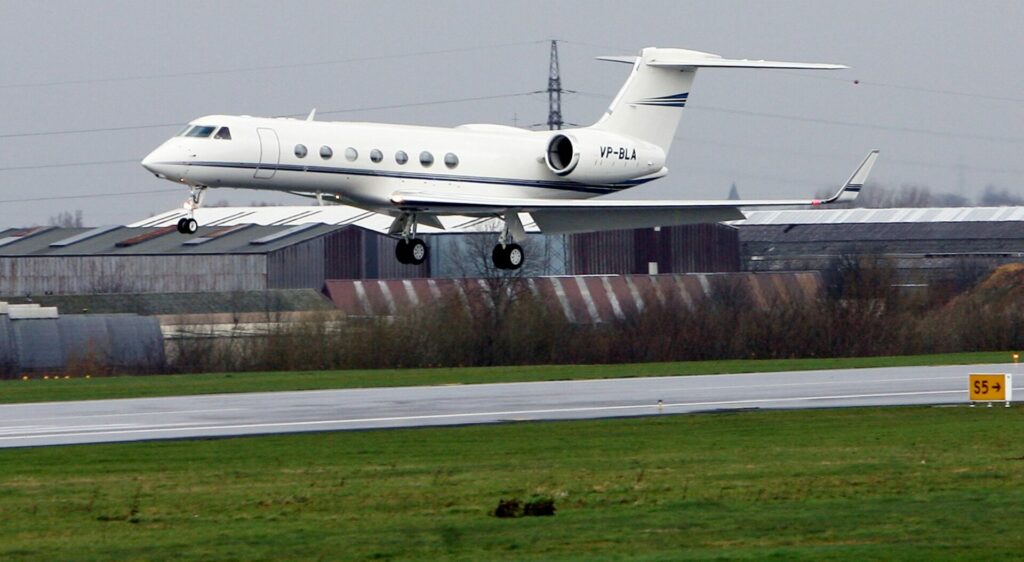Under pressure to reduce its environmental footprint, air transport has committed to drastically reduce its CO2 emissions. But the road will be very long before the sector can respect its commitments.
Aviation accounts for between 2% and 3% of global CO2 emissions, the main greenhouse gas, according to the International Civil Aviation Organization (ICAO), a UN agency. Although hit hard by the pandemic, global air traffic is expected to reach 10 billion passengers in 2050, more than double its 2019 level. The increase in emissions, if nothing is done until then, will be devastating.
The International Air Transport Association (IATA), which brings together the vast majority of airlines, and the aviation industry have committed to reducing net CO2 emissions to zero by 2050.
Forty-two countries, including those of the EU, the United Kingdom and the United States, called in the "Toulouse Declaration" in February for countries around the world to endorse this goal at the next ICAO Assembly at the end of September.
The impact of condensation trails left by aircraft on global warming, on the other hand, is not the subject of any reduction commitment at this stage. Still poorly evaluated, it seems "at least as important" as CO2 emissions, according to a study by the European Aviation Safety Agency (EASA).
Possible solutions
The sector is counting on technological and infrastructure improvements (new materials, more frugal engines, better management of the air traffic system) to help it reach its targets. The engine manufacturer CFM, a joint venture between GE and Safran, is working with its Rise project on the technologies of a future engine available in 2035 which could reduce fuel consumption by more than 20%.
According to the European aviation sector, all these technological improvements will make it possible to achieve almost half of the expected target. However, IATA believes that they will only provide up to 14% of the effort required.
Part of it (corresponding to 8% of the effort according to the Europeans, 19% according to the IATA) will come from a carbon capture system and emissions trading.
Related News
- EU requires airlines to use sustainable jet fuel by 2050
- Use of private jets 'booming' despite environmental impact
- Are airlines putting profit over safety this summer?
These improvements take time to be implemented when action is needed now, many NGOs insist, calling for limiting or reducing air travel.
Sustainable aviation fuels (SAF) represent the bulk of the means to decarbonise aviation: two-thirds of the effort according to the IATA, one-third according to the European aviation sector. They are made from biomass, waste oils and even, in the future, from capturing CO2 and green hydrogen to make synthetic fuels.
They have the advantage of being able to be used in current aircrafts and can reduce CO2 emissions by 80% compared to kerosene over their entire operating cycle. Airbus and Boeing have pledged that their planes will be able to fly with 100% SAF by 2030 but these fuels currently account for less than 0.1% of aviation fuel consumed and are two to four times more expensive than kerosene. To encourage their production, the EU is working on gradual obligations to incorporate SAFs into kerosene.
The electric alternative
Additionally, some experts are talking about the possibility of electric commercial planes. Electric propulsion is currently limited to small planes and future flying taxis in urban areas. The weight of the batteries needed to store energy makes it unsuitable for airliners. One axis of development is hybrid electric propulsion: during certain phases of flight, such as take-off, an electric motor provides additional energy to the combustion engine.
In the long term, research focuses on the fuel cell to power an electric motor by getting rid of batteries. Electricity would be produced on board by the chemical reaction between oxygen taken from the air and liquid hydrogen embedded in tanks.
This research differs from that on hydrogen aircrafts, where it would be directly burned in a combustion engine. The project led by Airbus aims to enter service by 2035, with probably short-haul aircraft with less than 100 seats at first, according to its president Guillaume Faury. But hydrogen is almost four times larger than kerosene, making it impossible to use it for long-haul routes, for which SAF will remain the only fuel.

